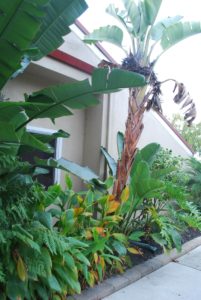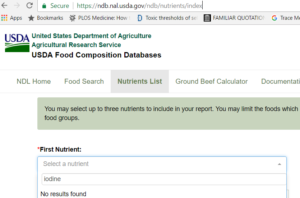Cannabinoids is the short answer.
Excerpts from p59 and p62, Editors, Emmanuel S. Onaivi, Takayuki Sugiura, Vincenzo Di Marzo, Endocannabinoids: The Brain and Body’s Marijuana and Beyond, (Taylor & Francis Group, 2006, Florida), pages 59 and 62 are from Chapter 3, by: E.S. Onaivi, H. Ishiguro, P. W. Zhang, Z. Lin, B. E. Akinshola, C. M. Leanoard, S. S. Chirwa, J. Gong, and G. R. Uhl, Chapter 3, Endocannabinoid Receptor Genetics and Marijuana Use,
“This chapter discusses the current state of description of the genes encoding the CBRs, [cannabinoid receptors], from their serendipitous identification to the existence of an EPCS, [Endogenous P_?__ Cannabinoid System – I can’t find the acronym spelled out within the text]. This previously unknown but ubiquitous EPCS consists of the membrane cannabinoid receptors, their ligands, endocannabinoids that are known to act as retrograde messengers, and the associated proteins for their biosynthesis, e.g., phospholipase D, and for their inactivation, e.g., fatty acid amide hydrolase (FAAH) and monoacylglycerols.” (p59)
Cannabinoids are essential throughout the body and in most forms of life, including plants, animals and some insects:
“The occurrence of a novel cannabimimetic molecule 2-scia-donoylglycerol (2-SG) in the plant seeds of umbrella pine (Sciadopitys verticillata) has also been reported (Nakane et al., 2000). 2-SG was found to have effects on the CB1R similar to, but with lower activity than, 2-AG, demonstrating the occurrence of these interesting molecules, not only in plants and animals but also in disparate organisms such as ticks. This widespread occurrence of endocannabinoids and related fatty acid amides and their receptors appears to be highly conserved in nature, indicating a fundamental role in biological systems. For example, the salivary glands of ticks, which are ectoparasitic and obligate blood-feeding arthropods, can make endocannabinoids and their congeners with analgesic and anti-inflammatory activity, which possibly participate in the inhibition of the host defense reactions (Fezza et al., 2003).” (p 62)
Ticks know that cannabinoids have medical properties – are U.S. politicians dumber than ticks? – or are they just under the control of corporate profit influence? The Eli Lilly company made $4.8 billion off of the cannabinoid system in 2007 alone with the sale of olanzapine/Zyprexa.
The paragraph continues:
“Apparently, the EPCS plays a critical role in the survival and mechanisms of cell death.”
In other words the endogenous cannabinoid system is essential for controlling apoptosis – the enzymatic blast of death that white blood cells can deliver to infected, cancerous, or otherwise damaged cells. The cure for cancer has always been within us – when we are well nourished and functioning correctly.
The paragraph continues (it’s a long paragraph, which actually started half way up the previous page, but this does include the rest of the paragraph.):
“Previously, the existence of anandamide analogs in chocolate had been demonstrated (di Tomaso et al., 1996). It is thought that chocolate and cocoa contain N-acylethanolamines, which are chemically and pharmacologically related to anandamide. These lipids could mimic cannabinoid ligands either directly by activating CBRs or indirectly by increasing anandamide levels (Bruinsma and Taren, 1999). These observations demonstrate that endocannabinoid analogs exist in plants and animals and further illustrate that evolutionary conservation of the cannabinoid system in nature. In this section, we will briefly review the properties and functions of these endocannabinoids. Thus, the EPCS represented by CBRs, endocannabinoids, and enzymes for the biosynthesis and degradation of these ligands is conserved throughout evolution. Endocannabinoids are present in peripheral as well as in brain tissues and have recently been demonstrated to be in breast milk. In addition, the recent demonstration of the expression of functional CB1R in the preimplantation embryo and synthesis of anandamide in the pregnant uterus of mice suggested that cannabinoid ligand-receptor signaling is operative in the regulation of preimplantation embryo development and implantation (Paria and Dey, 2000). 2-AG has been characterized as a unique molecular species of the monoacylglycerol isolated from rat brain and canine gut as an endogenous CBR ligand (Sugiura and Waku, 2000). 2-/ag also exhibits a variety of cannabimimetic activities in vitro and in vivo, and clearly further studies are necessary to determine the relative importance of 2-AG and anandamide in the human body and brain. This is because the levels of anandamide (800 times lower than the levels of 2-AG) found by some investigators in several mammalian tissues, and its production mainly in the postmortem period in the brain, have led to questions about the physiological significance of anandamide, especially in the brain, despite its high-affinity binding to CBRs (Sugiura and Waku, 2000). These research findings undoubtedly have advanced cannabis research and have allowed us to hypothesize that the EPCS consists of a previously unrecognized but elaborate network of endocannabinoid neuromodulators complete with their accompanying biosynthetic, uptake, and degradation pathways just like the monoaminergic and opiodergic systems.” (p62)
So olanzapine/Zyprexa prevents the breakdown of anandamide – which normally becomes more elevated in the postmortem (dead) brain while a different endocannabinoid – 2-AG – is normally more elevated in the live brain. Personally I like my brain to function more like a live brain than a dead brain, as I’m not partial to zombies or negative side effects such as diabetes, suicide, or homicide. So the Eli Lilly company may be similar to blood sucking parasitic ticks in that they are pleasuring some patients to the point of sickness or death with the prescription medication olanzapine/Zyprexa.
There was a warning from the FDA about Zyprexa in 2005, but regarding a problem with it being given in error to people who actually had been prescribed the allergy medication Zyrtec. Zyprexa causes many negative side effects and Zyrtec doesn’t cause any — at least for me, I’ve used it for allergies in the past. Zyprexa is described within the FDA warning as being an anti-psychotic that is only for the short term or maintenance management of schizophrenia or for the short term use for manic episodes associated with bipolar disorder. So be sure to check your Zyrtec bottle every time you refill it, just in case the pharmacist makes a mistake and grabs Zyprexa instead or couldn’t read a hand written prescription accurately and thought that it did say Zyprexa.[http://www.fda.gov/Safety/MedWatch/SafetyInformation/SafetyAlertsforHumanMedicalProducts/ucm152869.htm]
The medication, in an injectable form, was also under FDA review due to two patient deaths — autopsy found higher than expected levels in the blood of the two patients a few days following a standard injection (a one month sustained release dose is given as a intramuscular injection). The FDA required animal studies which showed that some animals did have increased amounts of the drug in their blood following death. No changes were required for the medication’s patient care or label requirements. The article includes the information that since 2011 that total sales of olanzapine had dropped for the year 2014, due to an increase in the use of generics. “Zyprexa’s 2014 sales have fallen to $1.04 billion from $4.62 billion in 2011, primarily due to competition from generic medications, Reuters reported. ” [http://www.biospace.com/News/deaths-review-of-eli-lillys-antipsychotic-zyprexa/369798?type=twitter_zyprexalilly032415]
The two patients are still dead though. Maybe enough patients complained to their doctors in 2012 and 2013 about the negative side effects of the medication to cause the large increase in use of different generics. — No that isn’t what happened, the FDA approved a generic form of olanzapine in 2014, so now Eli Lilly isn’t the only parasitic tick pleasuring patients to sickness or death. [http://www.fda.gov/NewsEvents/Newsroom/PressAnnouncements/ucm277022.htm]
Obviously Eli Lilly and the generic drug company is making billions off of our cannabinoid system — so clearly cannabinoids have medical uses within the body.
Cannabinoids are essential throughout the body and not all people can make them from other molecules. They may have a deficiency of the nutrient since birth, due to genetic defects, or some people may have been able to make adequate cannabinoids when they were young but then they may have lost the ability later in life due to malnutrition, disease, or aging. So for some individuals from birth and for others later in life cannabinoids are an essential nutrient that has to be obtained from external sources. The nutrient guidelines need to be changed to reflect the fact that some people and some babies may need an external source of cannabinoids in their diet or with an alternate external source, (such as medical marijuana or the prescription Sativex which contains a balanced amount of THC and CBD extracted from medical marijuana), and all infant formula should be required to have cannabinoid content equivalent to what would be provided naturally within breastmilk.
The herb rosemary, from the pine family, is a natural source of cannabinoids, so is nutmeg, cardamom, chocolate and cocoa, buckwheat, the inner germ of corn, and some seeds such as cucumber seeds and pomegranate seeds.
Sources: 1. Weihrauch et al, 1983 The Phospholipid Content of Foods (JAOCS, vol 60, no. 12 (December 1983) and 2. James Duke – Greenpharmacy.com for the herbal plants, Ethnobotanical and Phytochemical Database of medicinal plants and chemical activities, (This website still exists, however the Database is no longer available.)
See a couple of my older posts for more information and excerpts about the phospholipid content of many foods:
/Disclaimer: This information is provided for educational purposes within the guidelines of fair use. While I am a Registered Dietitian this information is not intended to provide individual health guidance. Please see a health professional for individual health care purposes./



